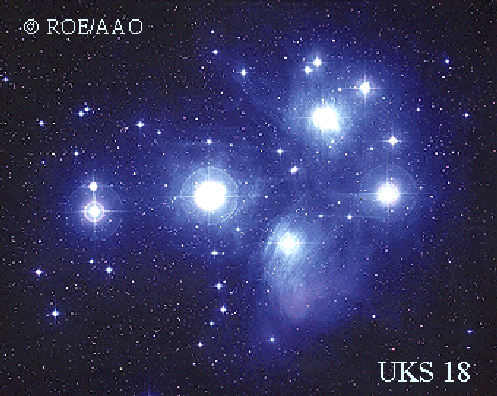Astronomy Picture of the Day
Discover the cosmos!
Each day a different image or photograph of our fascinating universe is
featured, along with a brief explanation written by a professional
astronomer.
September 3, 1996

The Pleiades Star Cluster
Credit:
Photograph made from plates taken with the
UK Schmidt
Telescope. Colour photography by David Malin.
Copyright:
Royal Observatory, Edinburgh,
Anglo-Australian
Observatory
Explanation:
It is the most famous star cluster on the sky. The
Pleiades can be seen
without binoculars from even the depths of a
light-polluted city.
Also known as the Seven
Sisters and
M45,
the Pleiades
is one of the brightest and most
easily visible
open clusters on the sky.
The Pleiades
contains over 3000 stars, is about 400 light years away, and only 13 light
years across. Quite evident in the above photograph is the blue
reflection nebula that surrounds the
bright cluster stars. Low mass, faint,
brown dwarfs have
recently been found in the Pleiades.
Tomorrow's picture: IRTF: Scanning the Infrared Skies
<
Archive
| Index
| Search
| Calendar
| Glossary
| Education
| About APOD
>
Authors & editors:
Robert Nemiroff
(MTU) &
Jerry
Bonnell (USRA)
NASA Technical Rep.:
Jay Norris.
Specific rights apply.
A service of:
LHEA
at
NASA/
GSFC
&:
Michigan Tech. U.
